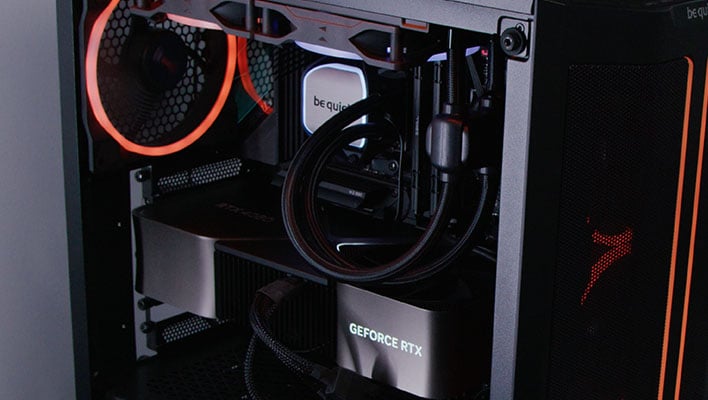AMD Radeon RX 8800 XT RDNA 4 GPU Rumored For A Massive Ray Tracing Performance Uplift
Potentially dubbed the Radeon RX 8800 XT, this RDNA 4 GPU allegedly would pack 45% faster ray tracing performance than AMD's flagship Radeon RX 7900 XTX, according to WCCFTech. Supposedly, this RX 8800 XT would also be close in performance for rasterized performance to NVIDIA's GeForce RTX 4080. Its power draw should also likely decrease, from the 355-watt TDP of the RX 7900 XTX to a number likely in the mid to high 200s.
The high-end versions of RDNA 4 will be based on Navi 48, and this reduction in power is a welcomed feature if it ends up accurate. Ray tracing remains an important point of contention between AMD and NVIDIA, for a myriad of reasons. First, NVIDIA has been ahead overall in terms of ray tracing performance for its GeForce RTX 40 series GPU compared to AMD's Radeon RX 7000 series. Its DLSS technology with Frame Generation has also been a big boon to frame rates with ray tracing enabled, leading for a better gaming experience for gamers.
Secondly, AMD produces the graphics powering popular consoles such as Sony's PlayStation 5 Pro. The console folks want the same ray tracing performance their PC friends get, leading AMD to need to push for improvement in the performance for the technology overall. This will especially be true whenever the PlayStation 6 comes into view.

If AMD can sell more GPUs such as its $499 Radeon RX 7800 XT, it can also attract more developers to optimize games for its products. It is likely NVIDIA's upcoming GeForce RTX 5090 flagship GPU will dominate the high-end, in both raster and ray tracing performance. The key item to watch is if AMD will still compete with the likes of GeForce RTX 5080 level products, such as it did with the RTX 4090.
Pricing will also be a strong point for gamers choosing a GPU in 2025, more so than ever. If NVIDIA delivers on the best performance for the high-end but is priced significantly more, AMD may have some room to gain market share in the mid to lower high-end market. With improvements such as ray tracing with RDNA 4 coupled with its continued development of FSR upscaling, the cards certainly appear to be lining up favorably for some improvement.

